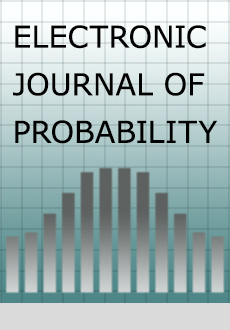Abstract
We study occupancy counts for the critical nearest-neighbor branching random walk on the $d$-dimensional lattice, conditioned on non-extinction. For $d\geq 3$, Lalley and Zheng [4] showed that the properly scaled joint distribution of the number of sites occupied by $j$ generation-$n$ particles, $j=1,2,\ldots $, converges in distribution as $n$ goes to infinity, to a deterministic multiple of a single exponential random variable. The limiting exponential variable can be understood as the classical Yaglom limit of the total population size of generation $n$. Here we study the second order fluctuations around this limit, first, by providing a rate of convergence in the Wasserstein metric that holds for all $d\geq 3$, and second, by showing that for $d\geq 7$, the weak limit of the scaled joint differences between the number of occupancy-$j$ sites and appropriate multiples of the total population size converge in the Wasserstein metric to a multivariate symmetric Laplace distribution. We also provide a rate of convergence for this latter result.
Citation
Erol A. Peköz. Adrian Röllin. Nathan Ross. "Exponential and Laplace approximation for occupation statistics of branching random walk." Electron. J. Probab. 25 1 - 22, 2020. https://doi.org/10.1214/20-EJP461
Information





